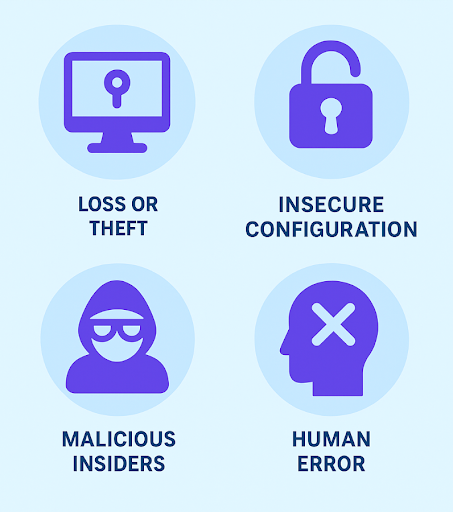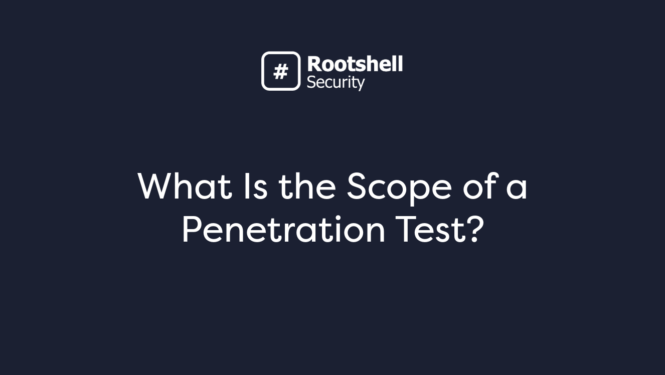Generative AI is being adopted at an unprecedented rate across industries. The Wharton Human-AI Research study, Growing Up: Navigating Gen AI’s Early Years, provides a comprehensive analysis of this rapid adoption, exploring current business applications, emerging trends, and prospects for Gen AI.
Based on a survey of over 800 senior business leaders, the report finds that weekly usage of Gen AI has nearly doubled since 2023. Despite this growth, many organizations still struggle to fully assess the impact and ROI of Gen AI initiatives.
According to Salesforce’s Generative AI Research, which surveyed over 4,000 full-time employees, 73% of respondents believe generative AI introduces new security risks.
In this guide, we will explore ten generative AI security risks that organizations should be aware of, along with practical strategies to manage and mitigate them.
What Is Generative AI?
Generative AI security refers to the strategies, tools, and policies used to protect generative AI systems, data, and users from cyber threats, misuse, and unintended risks.
Generative AI models, such as ChatGPT, DALL·E, or Gemini, can generate new content, including text, images, code, and audio. Unlike traditional machine learning models, which are designed to perform specific tasks, generative AI learns from existing examples and produces a wide range of original, often unpredictable outputs.
While these systems are powerful, they also introduce security challenges, such as data leakage, model manipulation, and misinformation generation.
In simple terms, generative AI security ensures that AI tools are used safely, ethically, and in compliance with regulations, protecting systems from exploitation and preventing potential harm. Let’s now explore some of the security risks you may encounter with generative AI.
1. Prompt Injection
A prompt injection attack is a type of security vulnerability that targets AI systems using large language models (LLMs) by manipulating the model’s input (the “prompt”) to make it behave in unintended or malicious ways. For example, a malicious user could craft input that instructs the AI to perform unintended actions, such as revealing sensitive data.
Prompt injection is particularly difficult to detect and prevent in natural language-based AI systems, like conversational AI, because the inputs are written in human language, which is unstructured and ambiguous, unlike traditional injection attacks that exploit well-defined query formats.
The Potential Impact of Prompt Injections
Prompt Leaks
Prompt leaks occur when confidential information embedded in prompts or generated responses is exposed. An LLM might inadvertently output sensitive data, making it visible to unauthorized users. Such leaks can compromise personal privacy, intellectual property, or corporate secrets, potentially causing financial and reputational damage.
Remote Code Execution
Prompt injection can also enable remote code execution (RCE). Attackers may craft prompts that trick the AI into outputting executable code sequences, which can then be run on backend systems. This method bypasses conventional security controls and can be used to deploy malware or gain unauthorized system access.
Malware Transmission
LLMs can be manipulated to generate malicious links or code snippets. Users who interact with these outputs may inadvertently execute malware, resulting in data theft, system corruption, or denial-of-service conditions.
Data Theft
Attackers can coerce LLMs into revealing sensitive information via carefully designed prompts. In regulated industries such as healthcare or finance, this can violate privacy laws and expose confidential client information.
Strategies to Mitigate Prompt Injection
Prompt injection can trick AI models into executing unintended instructions. Use these strategies to keep your systems secure and outputs reliable.
- Strict Input Validation and Sanitization: Validate and clean all inputs to remove potentially malicious instructions or executable code.
- Context-Aware Filtering and Output Encoding: Use contextual filters to block out-of-place prompts and encode outputs to prevent unintended command execution.
- Regular Updates and Fine-Tuning: Keep models up to date and fine-tuned on safe, relevant datasets.
- Monitoring and Logging: Continuously log and analyze interactions to detect suspicious activity early.
2. Sensitive Data Disclosure or Leakage
Generative AI can inadvertently reveal confidential information, especially if it has been trained on private or proprietary data. The risk is even greater in settings where AI systems handle large volumes of user-generated data, such as customer service chatbots or personalized content recommendation platforms.
Causes of Data Leakage

1. Insecure Configuration
Improperly configured AI systems, APIs, or storage environments can expose sensitive data. For instance, public access to model training datasets or cloud misconfigurations may allow unauthorized users to retrieve confidential information.
2. Human Error
Employees may accidentally input sensitive or proprietary information into GenAI tools without realizing that prompts or conversations could be logged or used to retrain models. This can lead to unintended data disclosure.
3. Malicious Insiders
Disgruntled or unethical employees with access to internal systems may deliberately exfiltrate or misuse sensitive data through AI interfaces or model outputs.
4. Loss or Theft of Devices
Laptops or mobile devices used to access AI platforms may contain cached data, API keys, or credentials that, if lost or stolen, can lead to data exposure.
Example
For instance, imagine a customer support chatbot powered by a generative AI model. If a user asks a seemingly harmless question, the AI might accidentally include another customer’s personal details, like email addresses, account numbers, or past support tickets, in its response.
Similarly, a content recommendation AI could unintentionally expose proprietary business strategies or internal reports when generating suggestions based on aggregated company data.
Strategies to Mitigate Data Disclosure
- Limit Access to Sensitive Data: Only allow the AI to access data necessary for its task.
- Use Data Masking and Anonymization: Remove sensitive identifiers in training data or user inputs to prevent accidental exposure.
- Implement Strong Access Controls: Restrict who can query the AI, and enforce role-based permissions for accessing outputs.
- Monitor and Audit Outputs: Log all AI-generated responses and regularly audit them for accidental leaks.
- Employ Human-in-the-Loop Review: For high-risk scenarios, have humans review AI responses before they reach end users.
- Train Models Responsibly: Use carefully curated datasets that exclude proprietary or confidential content.
3. Exploitation of Bias
Generative AI models can unintentionally reflect biases present in their data. These biases may relate to gender, race, culture, or other sensitive characteristics. When attackers understand these biases, they can manipulate AI outputs to reinforce stereotypes, generate misleading information, or influence decisions in their favour.
In 2020, the U.S. Department of Justice deployed an algorithmic risk assessment tool known as PATTERN to help determine which inmates could be safely transferred to home confinement during the COVID-19 pandemic.
Although the initiative aimed to protect public health, subsequent research revealed that PATTERN’s risk scoring reflected racial biases, raising concerns about fairness and transparency in automated decision-making.
Algorithmic bias can have serious real-world consequences. In generative AI, similar biases can appear in subtle but impactful ways. AI outputs can be exploited by malicious actors to manipulate decisions, target specific groups unfairly, or amplify misinformation.
Unchecked bias can create attack surfaces, weaken organizational resilience, and exacerbate systemic inequalities.
Mitigation Strategies:
- Diverse and Representative Training Data – Ensure training datasets are broad and balanced to minimize inherent biases.
- Bias Audits and Testing – Regularly evaluate model outputs for unfair or skewed results, especially in sensitive applications.
- Human Oversight – Implement human-in-the-loop review processes for high-stakes decisions influenced by AI.
- Adaptive Fine-Tuning – Continuously fine-tune models to correct biased behavior and respond to threats.
4. Phishing Attacks
AI can generate highly convincing emails, messages, or even deepfake audio and video that mimic trusted sources, making it far more difficult for individuals and organizations to detect malicious activity. What once required careful planning and manual effort can now be automated, personalised, and deployed at scale within seconds. This has redefined phishing assessments, as traditional detection methods struggle to keep pace with AI-generated threats.
Generative AI can also be used to create sophisticated social engineering campaigns, using publicly available information about targets to increase credibility and exploit human trust.
How to Avoid Phishing Attacks
- Check messages carefully: Always verify the sender’s identity and be cautious with unexpected requests for sensitive information, even if the message looks legitimate.
- Avoid clicking on suspicious links or attachments: Hover over links to check their true destination, and only open attachments from verified sources.
- Enable multi-factor authentication (MFA): MFA adds a layer of protection, ensuring that even if AI-generated phishing captures credentials, attackers cannot easily gain access.
- Keep systems and software up to date: Regularly update vulnerabilities that AI-driven attacks could exploit, including operating systems, browsers, email clients, and third-party apps.
5. Malware Attacks
Malware (short for malicious software) refers to any program or code designed to infiltrate, damage, or exploit systems without the user’s consent. Traditionally, malware has included viruses, worms, Trojans, spyware, and ransomware.
However, the rise of AI has given attackers new methods to enhance these threats. For example, AI models can now generate malicious code that continually rewrites itself to evade detection by traditional antivirus solutions.
Attackers can also use generative AI to create convincing phishing emails or fake software updates that deliver malware payloads more effectively.
Another growing concern is AI-assisted malware development, where threat actors use large language models to generate, debug, or optimize malicious code.
Even if AI platforms have built-in safeguards, leaked or open-source models can be fine-tuned to bypass restrictions, enabling less-skilled attackers to produce complex and adaptive malware.
To prevent these kinds of cyber attacks, organizations should:
- Use advanced endpoint protection with behavioral detection rather than relying solely on signature-based tools.
- Implement zero-trust architectures to limit the spread of malware once inside a network.
- Regularly update and patch systems to close known vulnerabilities.
- Provide security awareness training to help employees recognise AI-generated phishing or malicious download prompts.
6. AI Supply Chain Vulnerabilities
As artificial intelligence systems become more complex, they increasingly rely on extensive supply chains, from open-source code libraries and pretrained models to third-party APIs and cloud infrastructure. Each component in this chain introduces potential security risks that can be exploited by attackers.
In September 2025, attackers exploited a phishing email to compromise maintainer accounts for widely used npm packages. They published malicious updates that were automatically downloaded by projects depending on these packages, collectively affecting over 2 billion downloads per week.
This incident highlights how AI systems can be exposed to supply chain risks. Even if the AI models themselves are secure, vulnerabilities in underlying libraries or dependencies can introduce hidden backdoors, steal credentials, or manipulate data, demonstrating the need to verify and monitor all third-party components in AI workflows.
AI supply chain vulnerabilities happen when malicious actors target any part of the ecosystem used to build, train, or deploy AI models. This could include:
- Compromised training data, where attackers inject manipulated or poisoned datasets to subtly alter a model’s behavior or accuracy.
- Tampered pre-trained models, where seemingly trustworthy open-source models are modified to include hidden backdoors or malicious instructions.
- Insecure dependencies, such as third-party code or machine learning frameworks with unpatched vulnerabilities.
- Cloud infrastructure risks, where weak API security or misconfigured storage exposes sensitive model files and data.
To reduce exposure to AI supply chain vulnerabilities, organizations should:
- Implement rigorous model provenance tracking and verify the authenticity of all datasets and pretrained models.
- Conduct regular code and dependency audits for third-party components.
- Use digital signatures and checksums to validate model integrity before deployment.
- Establish vendor risk management processes that assess the security practices of external AI providers.
Ultimately, the security of an AI system is only as strong as the weakest link in its supply chain. Ensuring transparency, integrity, and accountability across every stage of model development and deployment is essential to prevent malicious manipulation and maintain trust in AI systems.
7. Shadow AI
Shadow AI refers to the use of generative AI tools, models, or workflows without formal oversight, approval, or governance from an organization’s IT or security teams.
Unlike sanctioned AI deployments, shadow AI emerges when employees independently adopt AI platforms to complete tasks such as drafting reports, generating code, or analyzing data.
A major concern with shadow AI is data exposure. Sensitive information can be unintentionally uploaded to external AI services with unclear security standards. In fact, the IBM 2025 Cost of a Data Breach report highlights that 16% of data breaches involved attackers using AI tools, illustrating the tangible risks associated with unsanctioned AI usage.
These tools operate outside formal oversight, meaning that organizations often lack visibility into which AI platforms are being used, what data is being processed, and how outputs are integrated into workflows, creating blind spots that malicious actors could exploit.
Strategies to Mitigate Shadow AI
- Implement AI governance policies that define approved tools and usage practices.
- Provide training and awareness for employees about safe AI adoption.
- Monitor network activity for unauthorized AI tool usage and enforce data access controls.
- Conduct regular risk assessments for AI supply chains, third-party models, and APIs.
Shadow AI represents a hidden threat; even a secure AI model can become a liability if used outside the boundaries of organizational oversight. To effectively monitor and manage shadow AI risks, organizations can benefit from AI penetration testing to simulate attacks and identify vulnerabilities before they are exploited.
8. Access and Authentication Exploits
Access and authentication vulnerabilities occur when unauthorized individuals gain entry to AI platforms, model APIs, or underlying data repositories, allowing them to manipulate outputs, extract sensitive information, or disrupt services.
Vulnerabilities Leading to Access and Authentication Exploits
The following factors highlight how weaknesses in access and authentication mechanisms can expose GenAI systems to exploitation and compromise:
1. Weak or Misconfigured Authentication
Many GenAI environments rely on API keys, tokens, or single sign-on (SSO) integrations. When these credentials are weak, reused, or stored insecurely, attackers can exploit them to gain unauthorized access.
2. Inadequate Access Controls
Poorly defined role-based access control (RBAC) policies can expose sensitive components of AI systems. Without strict user segmentation, internal developers or external partners might unintentionally have access to model parameters, training data, or administrative dashboards, increasing the likelihood of data leakage or tampering.
3. Compromised API Endpoints
APIs form the backbone of most GenAI integrations. Attackers often target exposed or poorly secured endpoints to inject malicious requests, harvest data, or perform denial-of-service attacks. Unauthenticated API access can enable exploitation of the AI model itself.
4. Credential Theft and Phishing
As AI tools become integral to workflows, attackers frequently attempt to steal login credentials through phishing campaigns or social engineering. Once credentials are compromised, adversaries can impersonate legitimate users, making unauthorized actions difficult to detect.
5. Insufficient Monitoring and Logging
A lack of monitoring means unauthorized access attempts may go unnoticed. Without logging and anomaly detection, security teams cannot quickly identify or respond to breaches involving AI systems.
Mitigation Strategies
Reducing the risk of access and authentication exploits in GenAI systems requires a proactive, multi-layered security approach. Organizations should focus on both preventative and detective controls to safeguard user identities, system access, and sensitive data.
Enforce Strong Authentication
Implement multi-factor authentication (MFA) across all GenAI platforms and administrative tools. This means that even if credentials are compromised, unauthorized users cannot easily gain access. Avoid shared accounts and require regular password updates aligned with organizational security policies.
Adopt a Zero-Trust Architecture
Follow a zero-trust security model, where no user or system is implicitly trusted, whether inside or outside the network perimeter. Continuously verify user identities, device health, and session activity before granting access to AI systems or datasets.
Implement Role-Based Access Control (RBAC)
Restrict user permissions to only what is needed for their role. Separate administrative, developer, and end-user privileges, and regularly review access levels to prevent privilege creep. Temporary access should be time-limited and automatically revoked when no longer required.
Secure API Endpoints
Protect API keys and tokens using encrypted vaults or key management services. Configure rate limiting and authentication checks for all AI API endpoints to prevent brute-force attacks and abuse. Monitor API traffic for anomalous patterns that may indicate exploitation attempts.
Maintaining strong access controls and monitoring requires ongoing threat intelligence and vulnerability assessment. Organizations can use cyber threat intelligence services to understand emerging attack patterns, detect unusual activity, and strengthen AI security postures.
Putting Security at the Core of Generative AI Adoption
Watch: Shaun Peapell explains what AI security testing really involves and how to protect your organisation from threats.
As generative AI becomes more embedded in business operations, securing these systems is no longer optional; it’s essential.
From prompt injection and data leakage to shadow AI and supply chain vulnerabilities, each risk highlights a need for proactive governance, access controls, and ongoing monitoring.
Implementing stronger security frameworks, regular audits, and employee training means that organizations can safely use the power of generative AI while minimizing exposure to threats.
To see how these security measures can be applied in practice, book a demo with Rootshell and explore tailored solutions for your organization. Responsible AI adoption starts with security at the core.



